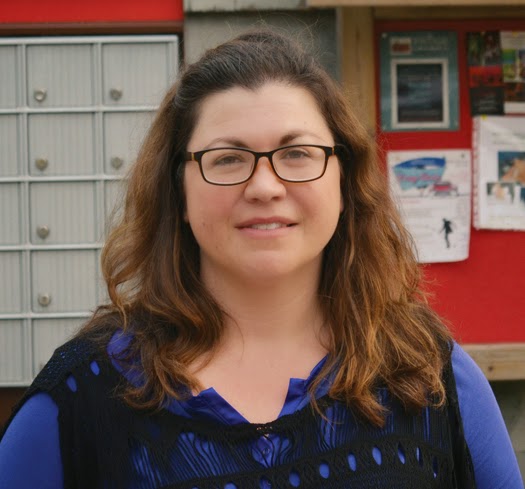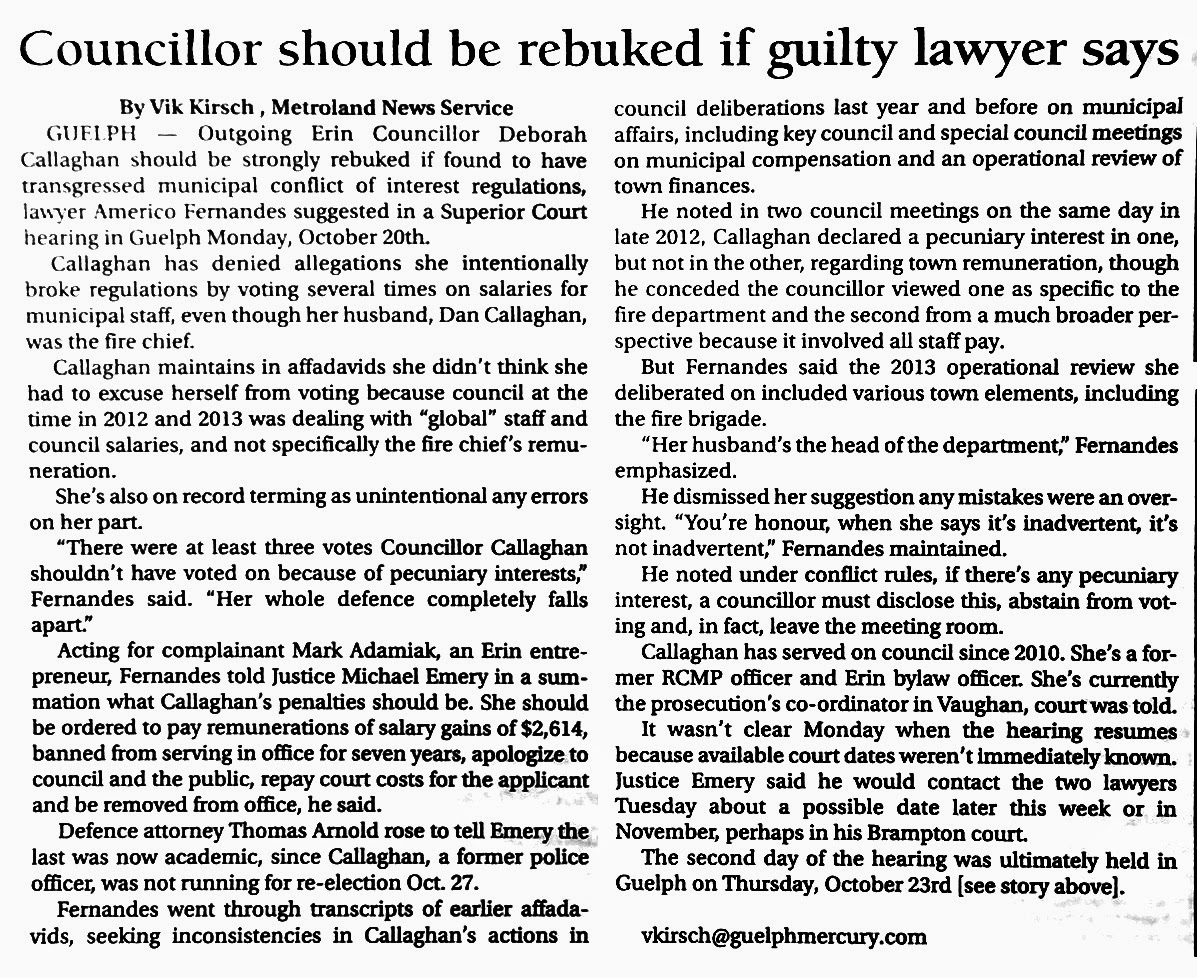Erin should aggressively promote itself as a destination within Ontario’s Greenbelt, and express support for the protection it provides when the legislation is reviewed next year.
Local politicians were distressed ten years ago when the province decided to include the east side of the Town, including Hillsburgh and Erin village, in the 1.8 million acre Greenbelt.
Faced with loss of local control over development, they expanded the urban boundary by 300 acres in the north of Erin village, exempting it from the Greenbelt.
In other parts of the Greater Toronto Area, developers are trying to chip away at the Greenbelt to get more land for housing, while environmentalists are trying to expand the Greenbelt through river valleys to ensure long term protection for what has become known as our “natural heritage”.
Here in Erin, we still have plenty of green space, and more acres of urban land for housing development than we can actually use, given the small size of our river. Apart from development issues, the Greenbelt represents a marketing opportunity that we can use to target city dwellers to want to escape, even just for a day.
Part of that is the Greenbelt Route, a cycling route from the Niagara River to Rice Lake (south of Peterborough) that will be launched next year. It is mainly on existing roads, but a key section is the old rail line of the Caledon Trailway running 36 km from Terra Cotta through Inglewood and points north-east.
Every trail needs side loops to make excursions practical and interesting. Erin already has the Trans-Canada Trail (the Elora Cataract Trailway), so it is well positioned to take advantage of that need.
Erin’s rolling countryside is already popular with cyclists, but what if we were to advertise the “Erin Loop”? I’m sure we could pay a consultant to come up with a catchier name, but the idea would be to encourage groups of cyclists to use Erin as the home base for excursions.
They can show up on a weekend morning and have breakfast here. They can cycle down Winston Churchill, and possibly spend time at Terra Cotta Conservation Area. Just south of there, they pick up the Caledon Trailway, travel to Inglewood, then turn north on signed bike routes to get to the McLaren Road entrance of Forks of the Credit Provincial Park.
The Park has many bike trails and it also provides direct access to the Trans-Canada Trail, looping them back to Erin where they can shop and go out for dinner.
At a recent seminar, Shelley Petrie of the Friends of the Greenbelt charitable foundation said the Greenbelt protects a critical mass of farmland from urban sprawl and provides connected lands that allow wildlife to migrate.
“It’s about the rural economy and recreation plays into it,” she said. “It’s about sustainability for the entire region. It’s taken 30 years to get here, but over time, people’s values started to be reflected in these plans – to protect the beauty of nature, to protect local food production, to have a livable region. For the entire farming sector, this is a hotbed from a jobs and economy point of view.”
She said alliances between farmers and environmentalists are needed as the Greenbelt is reviewed. Key discussions will not only be about whether to expand Greenbelt boundaries, but the impact of highway development (which drives urban sprawl), protecting water resources, dealing with contaminated soils (perhaps with a Clean Soils Act) and possibly adding a protected “Foodbelt” zone of agricultural land just outside the Greenbelt.
These are all issues that could affect Erin’s future, so we should be paying attention. Here are a few websites for additional information: greenbeltalliance.ca, walkandrollpeel.ca, greenbelt.ca and greenbeltleaders.ca.
In other parts of the Greater Toronto Area, developers are trying to chip away at the Greenbelt to get more land for housing, while environmentalists are trying to expand the Greenbelt through river valleys to ensure long term protection for what has become known as our “natural heritage”.
Here in Erin, we still have plenty of green space, and more acres of urban land for housing development than we can actually use, given the small size of our river. Apart from development issues, the Greenbelt represents a marketing opportunity that we can use to target city dwellers to want to escape, even just for a day.
Part of that is the Greenbelt Route, a cycling route from the Niagara River to Rice Lake (south of Peterborough) that will be launched next year. It is mainly on existing roads, but a key section is the old rail line of the Caledon Trailway running 36 km from Terra Cotta through Inglewood and points north-east.
Every trail needs side loops to make excursions practical and interesting. Erin already has the Trans-Canada Trail (the Elora Cataract Trailway), so it is well positioned to take advantage of that need.
Erin’s rolling countryside is already popular with cyclists, but what if we were to advertise the “Erin Loop”? I’m sure we could pay a consultant to come up with a catchier name, but the idea would be to encourage groups of cyclists to use Erin as the home base for excursions.
They can show up on a weekend morning and have breakfast here. They can cycle down Winston Churchill, and possibly spend time at Terra Cotta Conservation Area. Just south of there, they pick up the Caledon Trailway, travel to Inglewood, then turn north on signed bike routes to get to the McLaren Road entrance of Forks of the Credit Provincial Park.
The Park has many bike trails and it also provides direct access to the Trans-Canada Trail, looping them back to Erin where they can shop and go out for dinner.
At a recent seminar, Shelley Petrie of the Friends of the Greenbelt charitable foundation said the Greenbelt protects a critical mass of farmland from urban sprawl and provides connected lands that allow wildlife to migrate.
“It’s about the rural economy and recreation plays into it,” she said. “It’s about sustainability for the entire region. It’s taken 30 years to get here, but over time, people’s values started to be reflected in these plans – to protect the beauty of nature, to protect local food production, to have a livable region. For the entire farming sector, this is a hotbed from a jobs and economy point of view.”
She said alliances between farmers and environmentalists are needed as the Greenbelt is reviewed. Key discussions will not only be about whether to expand Greenbelt boundaries, but the impact of highway development (which drives urban sprawl), protecting water resources, dealing with contaminated soils (perhaps with a Clean Soils Act) and possibly adding a protected “Foodbelt” zone of agricultural land just outside the Greenbelt.
These are all issues that could affect Erin’s future, so we should be paying attention. Here are a few websites for additional information: greenbeltalliance.ca, walkandrollpeel.ca, greenbelt.ca and greenbeltleaders.ca.





















